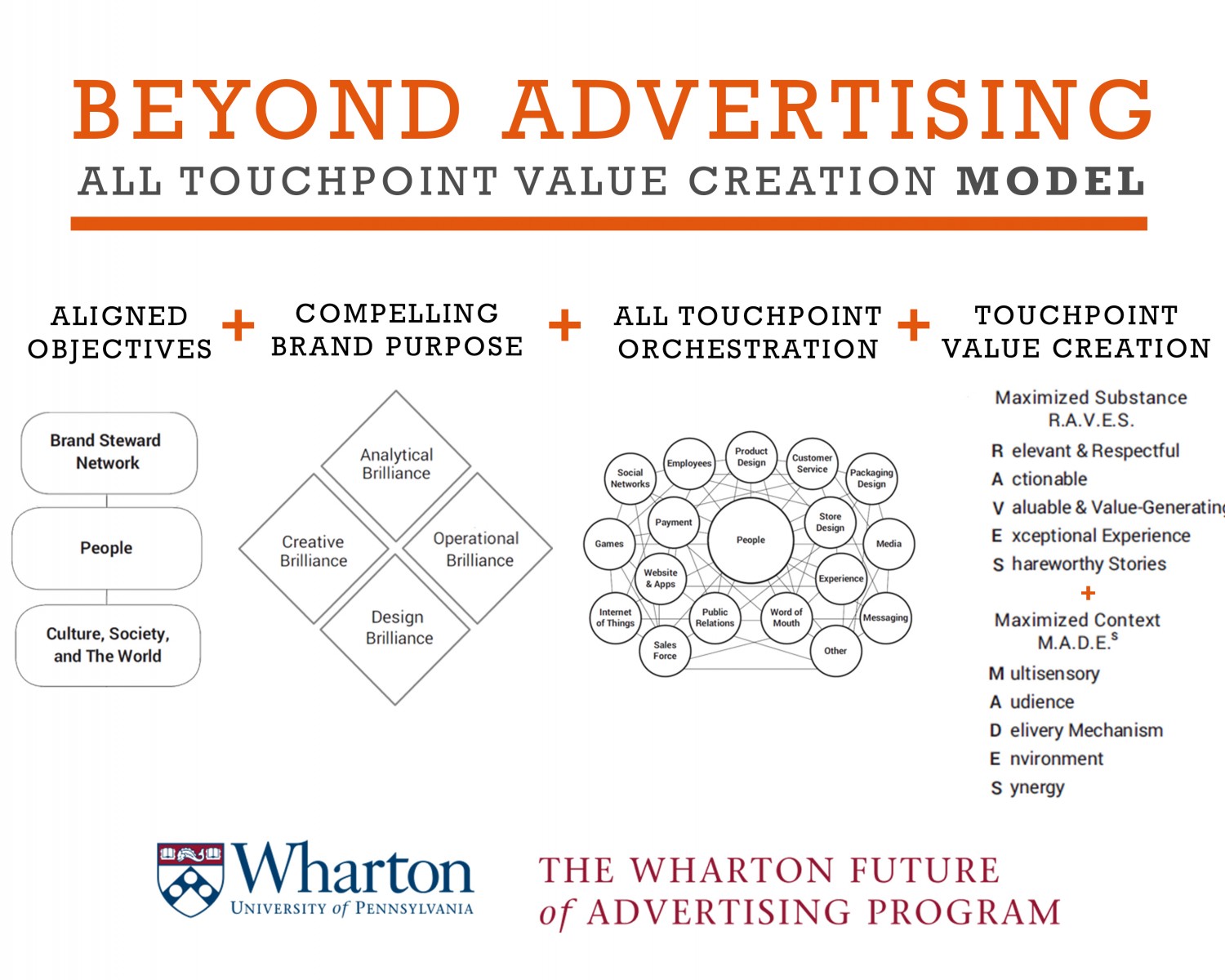Commentary
Why the Future of Retail Needs to Move Beyond Advertising
Aug 11, 2016
Why the Future of Retail Needs to Move Beyond Advertising


By Yoram (Jerry) Wind and Catharine Hays, with Alexa de los Reyes
“By 2020, advertising will shift from being an additive element to being an invisible, inspirational, and indispensable part of product and service experiences.”
—Karl Isaac, Head of Brand Strategy and Innovation, Adobe
The fundamental relationships among brands, media, and people are being transformed at an unprecedented rate, and the impact on the retail environment has been profound. How people encounter, experience, and purchase products continues to evolve as new technologies and interfaces proliferate. Given the broad and irreversible impacts of these changes, the status quo is no longer a viable approach.
Successful retailers today have converted to seamless, omnichannel offerings across all touchpoints. They get the right return on investment for their advertising and marketing expenditures. They have a plan for adapting to and capitalizing on the industry-wide upheavals and for staying ahead of the game. They optimize the balance of ecommerce and brick-and-mortar facilities in alignment with how the consumer journey has been transformed.
Does this describe you and your organization? If it does, then you don’t need the insights from our collaborative book, Beyond Advertising: Creating Value Through All Customer Touchpoints. If not, you have lots of company.
According to numerous studies by IBM, a majority of C-suite executives think their organizations are not capable of dealing with the changing environment. How can retailers move out of the reactive mode, adapt to the demands of today, and prepare for the inevitable changes on the horizon?
The Touchpoint Value Creation Model
To address these questions, the Wharton Future of Advertising Program engaged over 200 global thought leaders from numerous industries and perspectives for the Advertising 2020 Project. Based on their insights and contributions, we proposed a model of new mindsets and approaches that we’ve termed the All Touchpoint Value Creation Model (ATVC). It is summarized as:
The ongoing, synergistic orchestration and optimization of all touchpoint value creation among an enterprise, the people in its network, the people it seeks to reach and serve, and the societies and cultures in which it exists and has responsibility. (See Figure 1 chart above and expand for full image.)
How to Begin
Before applying this model and the “Beyond Advertising” roadmap for success, consider these five key questions to help you see to what extent you’re on track:
- Is your marketing strategy aligned to meet the needs of your brands, customers and community, and society? Are you focused on long-term value generation and short-term activation?
- Are you creating value through all points of possible interaction, including those beyond the purview of advertising and marketing including product design, package design, customer service, call centers, retail/e-tail design, and shopping experience?
- Do your advertising and offerings meet the R.A.V.E.S. criteria? Are they Relevant and respectful, Actionable, Valuable and value-generating, and offer an exciting Experience and Shareworthy story?
- Does the design through each touchpoint meet the M.A.D.E.S. criteria? Is it multisensory, customized to the audience, device, and environment, and taking into account the power of synergies among touchpoints?
- Are you engaged in continual adaptive experimentation to understand what works, what doesn’t, and why?
If your answer to any of these questions is “no,” or “I’m not sure,” or if you don’t recognize why these questions are important, then you have two choices: read Beyond Advertising, or get left behind! To order, visit Amazon.com or this website.
Yoram (Jerry) Wind is the Lauder Professor and professor of marketing at The Wharton School. He is also the founding director of the Wharton SEI Center for Advanced Studies in Management, the Wharton Fellows program, and a co-founder of the Wharton Future of Advertising Program, a leading global research collaboration bridging academia and practitioners. Wind is the recipient of the Buck Weaver Award (2007) and the Paul D. Converse Award (1996), among other accolades, and he has published 27 books and more than 300 research papers in journals worldwide. Catharine Findiesen Hays is the executive director and co-founder of the Wharton Future of Advertising Program. Previously, she led pioneering marketing, strategy, and sales teams during a 15-year career at AT&T. She is the Wharton marketing department’s co-host for the “Marketing Matters” radio show on the campus’ Sirius XM radio channel, Business Radio Powered by the Wharton School. Acknowledgments: The authors also thank Alexa de los Reyes, the editorial manager of the Wharton Future of Advertising Program for her project efforts. She has provided editorial support for the program’s diverse print and online publications since 2010.
